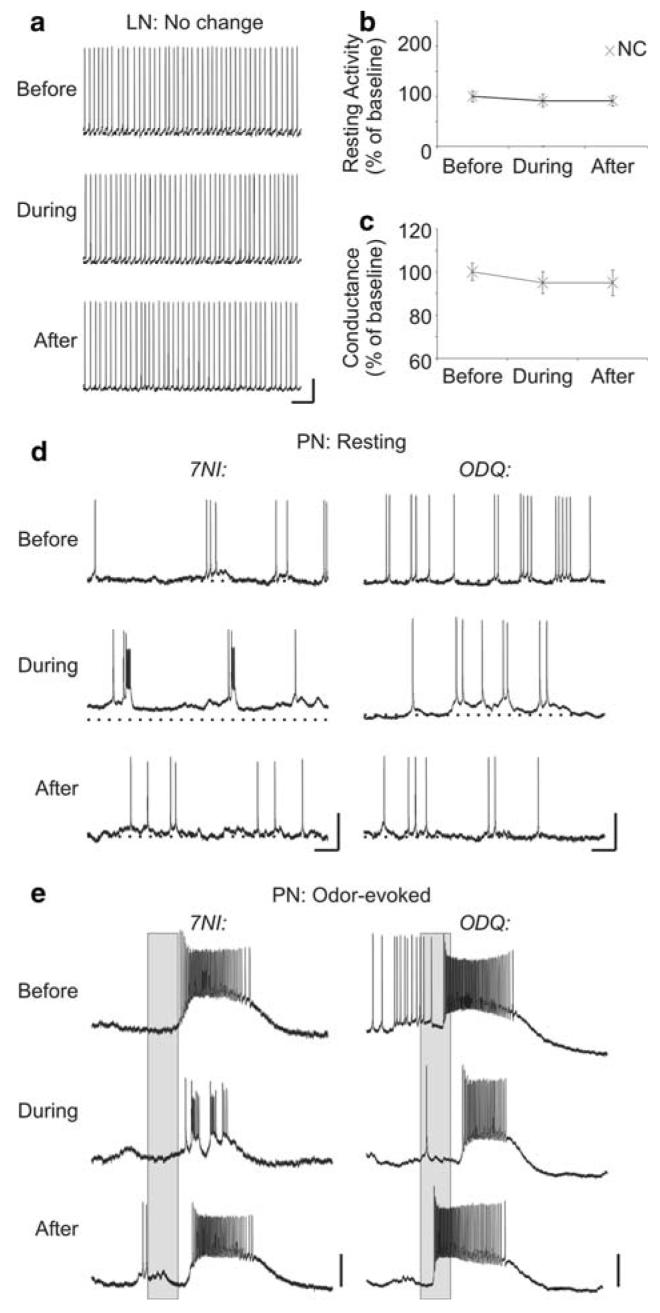Fig. 6.
sGC inhibition caused differential effects in the resting and odor-evoked in a subset of neurons. a-c A subset of LNs (n = 3) showed no change (X) in resting activity (a, b; LN33 shown) and conductance (c) when sGC was inhibited (changes were similar to those observed during control saline application, see Materials and methods). d, e The effects of NOS and sGC inhibition on the resting (d) and odor-evoked (e) activity were directly compared in PN4. d PN4's resting activity became burst-like after NOS inhibition, but no bursting activity was observed after sGC inhibition. e Odor-evoked activity also differed during NOS and sGC inhibition. NOS inhibition caused a decrease in net spikes and the appearance of bursting, intermittent firing, while sGC inhibition caused a more moderate decrease in net spikes and an increased delay to onset. Calibration a, d 20 mV and 250 ms; e 20 mV and 200 ms (gray bar)

